Royal Icing Recipes For Cake Decorating
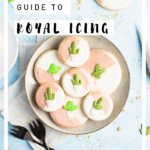
If you're new to working with royal icing and want to learn the basics, this is the post for you! In it you'll find my go-to royal icing recipe, a break down of the basic royal icing consistencies, answers to frequently asked questions and how to troubleshoot common royal icing issues.

I think we can all agree: When it comes to cookie decorating, it's hard to beat the level of detail you can get with royal icing. But for a beginner, making and decorating with royal icing can feel pretty intimidating.
Should I use raw egg whites or meringue powder? What about powdered egg whites vs. meringue powder? How do I store it? How do I use it? What's all this talk about consistencies?
These were just a few of the things I wondered when I started working with royal icing and boy, I didn't even know where to begin! But after decorating with it for over 6 years, I've learned a lot about how to make it, use it and what NOT to do.
So if you're new to royal icing and don't know where to start, this is a great place to be! Let's take some of that guess work out of your decorating endeavors.
How to Make Royal Icing
There are two types of recipes for making royal icing: recipes that call for raw egg whites and recipes that call for powdered egg white substitutes (like powdered egg whites or meringue powder). Although you can use pasteurized egg whites in place of raw whites, I personally prefer the powdered substitutes because they have a long shelf life, don't need refrigeration and, in my opinion, produce a more stable royal icing.
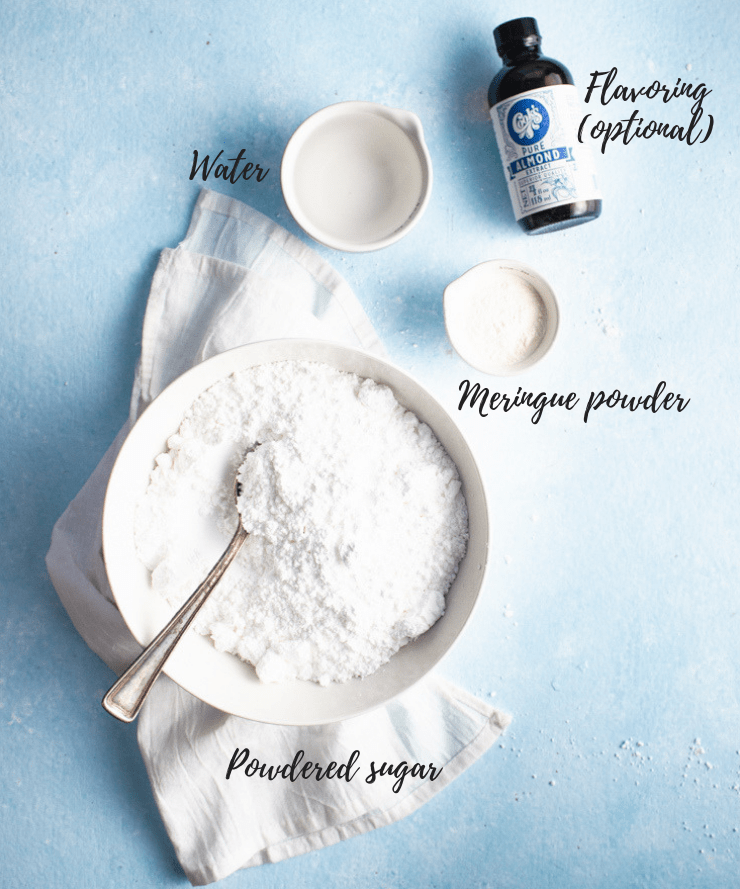
For this recipe, you'll need 3 simple ingredients:
- 1/4 cup meringue powder or powdered egg whites
- 1/2 cup lukewarm water
- 1 lb powdered sugar
- Optional: 1 tsp of an extract of your choice
This will make enough royal icing to decorate about 2 dozen cookies.
Powdered Egg Whites vs. Meringue Powder
For the sake of this recipe, powdered egg whites and meringue powder are essentially interchangeable. But if you're wondering how they're really different, powdered egg whites are just that: dried egg whites, while meringue powder is an egg product containing corn starch, egg whites, sugar, gum arabic, calcium sulphate, citric acid, cream of tartar, silicon dioxide and artificial vanilla flavoring.
Personally, I tend to prefer meringue powder because it's slightly more stable and already has flavoring, but either one will make a solid royal icing.
Step-by-Step Instructions
In the bowl of a stand mixer, combine the meringue powder/powdered egg whites and lukewarm water. In this context, "lukewarm" means just slightly warm to the touch.
Use a whip attachment to whip the mixture on high until frothy. Scrap down the sides as you go to make sure there's no residual powder.
Pro tip: Use a water bottle to lightly spray the sides before scraping them. This will help ensure that the powder dissolves and your royal icing is lump free.

Sift the powdered sugar and add it to your bowl. Continue whipping the icing, this time on a medium speed. Stop the machine every 2-3 minutes to spray and scrape down the sides.
If you're adding additional flavoring to your royal icing, you can add it during one of these stops.
Whip the royal icing until you've reached the desired consistency. Personally, I work almost exclusively with 20-second consistency icing, which is light and reminiscent of marshmallow fluff.
If you need more than one consistency, whip your royal icing to the stiffest consistency and add a few drops of water at a time to the remaining icing to water it down to the desired consistency.

What Consistency Should I Use?
You may be wondering, "Ok, if I'm supposed to whip the royal icing to the desired consistency… what consistency should I be using?" Great question! This really varies from cookier to cookier and project to project.
Some people like to using a piping consistency to outline their shape before filling it in with a flood consistency icing, while others like to use one consistency for filling their shape (I'm in the latter camp).
It also depends on the task. Are you covering a cookie? Piping lettering? Creating flowers or other intricate designs?
Here are the basic consistencies and what they're used for:
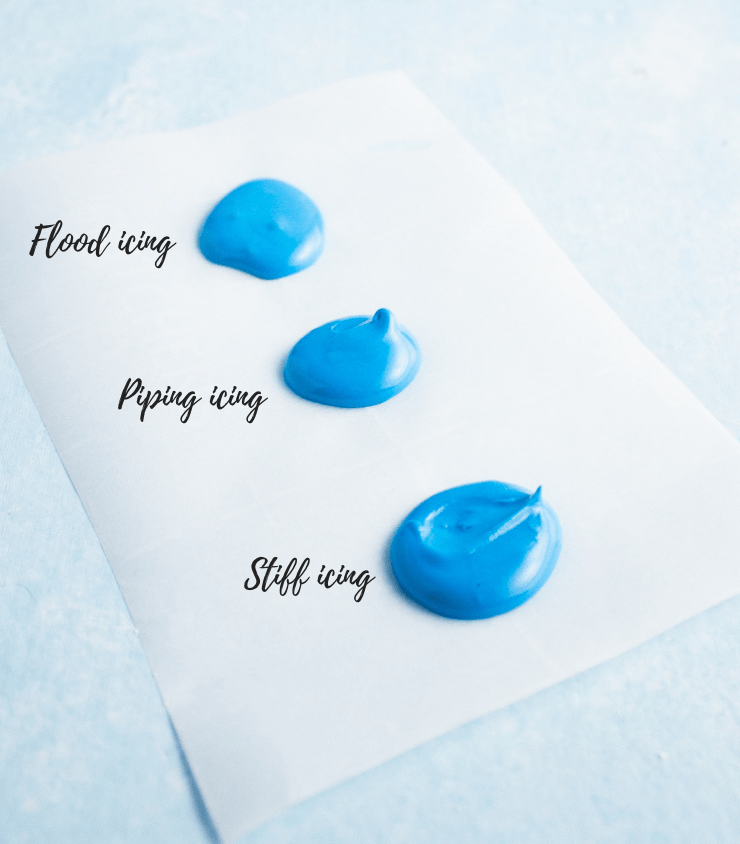
Stiff icing: As the name implies, this the thickest/stiffest consistency of icing you'll use when decorating cookies. This icing will hold a very stiff peak and has a spreadable, frosting-like consistency.
Uses: flowers/succulents/other intricate shapes that need to hold their form, brush embroidery
Piping icing: This is best described as a medium consistency icing. It should hold a soft peak that doesn't spread when piped. Think soft serve ice cream.
Uses: outlining cookies, lettering, detailing/filigree, piping borders
20 second icing: This isn't a consistency you see called out very often, but I wanted to mention it because it's my go-to icing consistency.
If you're unfamiliar with icings that are delineated in seconds, the seconds simply stand for the amount of time it takes the icing to reabsorb and return to a smooth finish.
In other words, if you pick up a spoonful of icing and drop it back in the bowl, this icing will take approximately 20 seconds to reabsorb. This icing lies somewhere between piping icing and flood icing.
Rather than outline and fill, I'll pipe an entire layer of this icing straight onto the cookie, use a toothpick to work it into place, gently shake/tap and it's good to go.
Uses: filling/covering cookies, royal icing transfers, building dimension, wet-on-wet
Flood icing: This is the thinnest icing you'll use when decorating your cookies and it's used primarily for filling in areas that have been outlined with piping icing. This icing should be right around a 10-12 second consistency.
Uses: flooding outlined areas, wet-on-wet
Coloring Royal Icing
Royal icing is very easy to color, but there are a few things you should keep in mind.
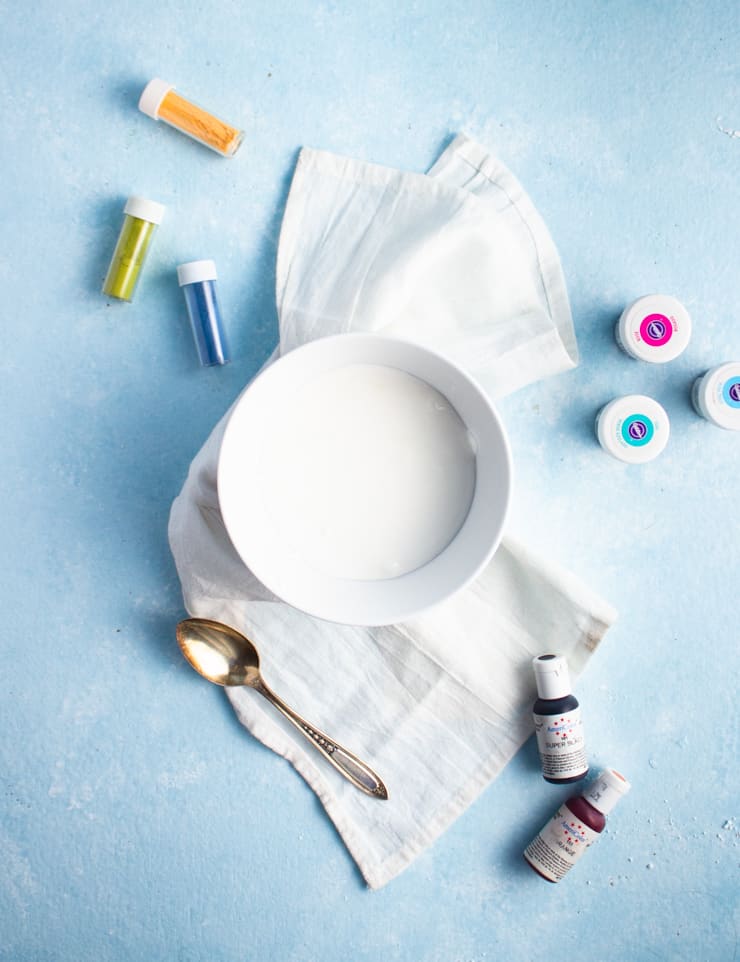
- Use gel food coloring: using powdered or watery food coloring can affect the consistency of your royal icing. Gel food coloring is extremely pigmented so you shouldn't need much, and the consistency is already like that of the icing itself.
- Royal icing darkens as it dries: whatever color you want on your cookie, you'll want to mix it slightly lighter as it will darken as it dries.
- Some colors are hard to mix: red and black in particular can be difficult colors to mix. The good news is that they will darken as they dry. It also helps to use a highly pigmented gel food coloring like "super black" or "super red" by Americolor.
- Make more of each color than you think you'll need: because royal icing darkens as it dries, it's very hard to match a color if you end up not having enough. It's always a good idea to make more of a color than you think you'll need.
Decorating with Royal Icing
Now that you know all of the basics of making royal icing, here's how to decorate with it.

- If you need an outline for your design, draw it directly onto your cookies with a food pen/marker.
- Load your icing into piping bags and pipe it directly onto the top of your cookies. Pro tip: For easy loading, place the piping bag into a tall glass and pull the top down around the sides of the glass. This will hold the bag in place while you pour.
- Use a toothpick or a quilling tool to work the icing into place. A gentle tap or two will help the icing settle.
- If you end up with any little air bubbles, you can pop those with your toothpick or quilling tool.
- Allow the icing to dry completely before packing or adding additional decorations (about 6-8 hours).
Troubleshooting Common Royal Icing Problems
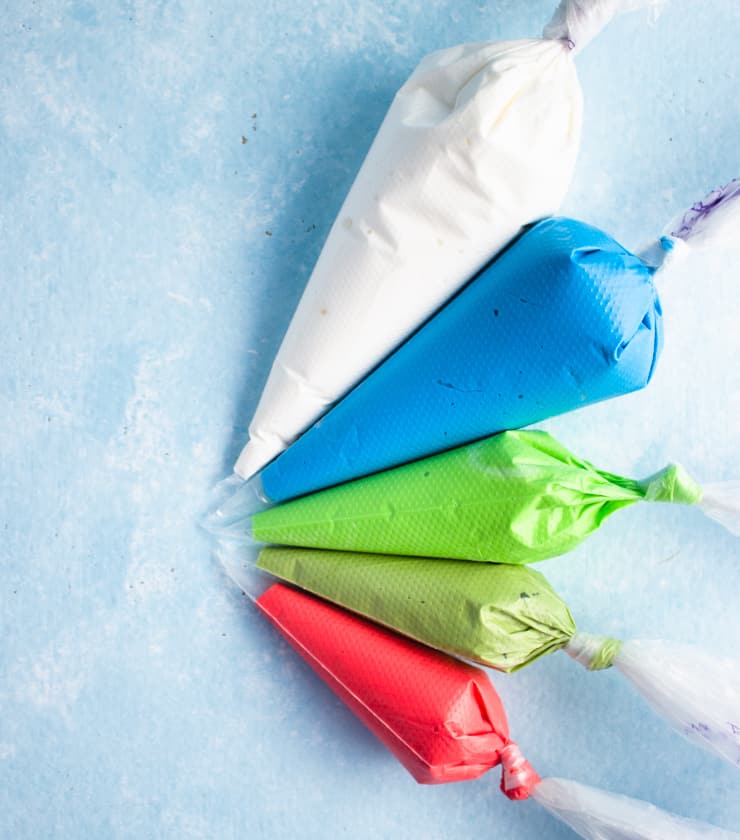
How do I prevent lumps in my royal icing?
Step one is to make sure all of the powder in your royal icing dissolves and there's no powder on the sides of your bowl.
Following the steps above should put you in a solid place to avoid lumps, but sometimes, despite your best efforts, they still happen. And you're bound to find them if your piping with a fine tip.
If you find your royal icing has lumps, try straining it through a fine mesh cloth. Pro tip: A pair of clean pantyhose is perfect for this, and you can even drop it right into your piping bag to reduce the mess.
How do I avoid butter bleed?
Ah, butter bleed. The bane of a cookier's existence. If you're not familiar with butter bleed, it's when the butter from the cookie bleeds into the royal icing on top of the cookie leaving it discolored.
The main culprit: heat. When cookies become too warm, the butter in the cookie will melt and can leech into the royal icing.
To prevent butter bleed, cool your cookies on a cooling rack rather than the pan, make sure they're completely cool before working with them (I like to leave them out over night so they cool and dry as much as possible) and use a thicker icing (a thinner, more porous icing is more likely to suck up more butter).
Once the cookies are iced, make sure to keep them somewhere cool.
Frequently Asked Royal Icing Questions
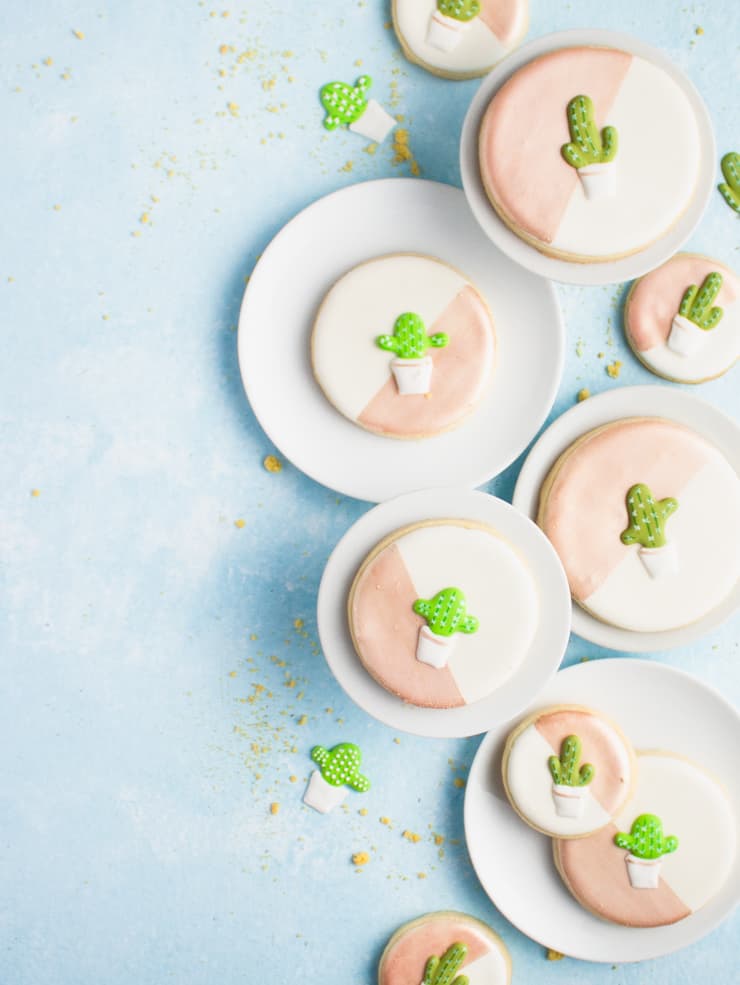
Can I use royal icing to decorate a cake?
If the cake is covered in fondant, yes. But just like butter bleed from a warm cookie, butter from a buttercream frosting will leech into your royal icing leaving it discolored. Dried or drying royal icing should not be refrigerated.
How do I store royal icing?
Royal icing made with meringue powder or powdered egg whites can be stored at room temperature. To keep the royal icing from crusting, place a piece of plastic wrap directly on the surface of the royal icing.
If you keep it for more than a few days, the water may start to separate from the icing. This doesn't mean you can't use it, but you'll want to give it a good mix before you do. You can store royal icing in this manner for about 2 weeks.
What are royal icing transfers/how do I make royal icing transfers?
Royal icing transfers are royal icing decorations that have been piped onto wax or parchment paper that can be transferred to other creations like cookies or cupcakes.
Transfers are great for making decorations ahead, perfect for beginners who may want the assistance of a stencil and can be kept in a cool, dry place out of direct sunlight almost indefinitely.
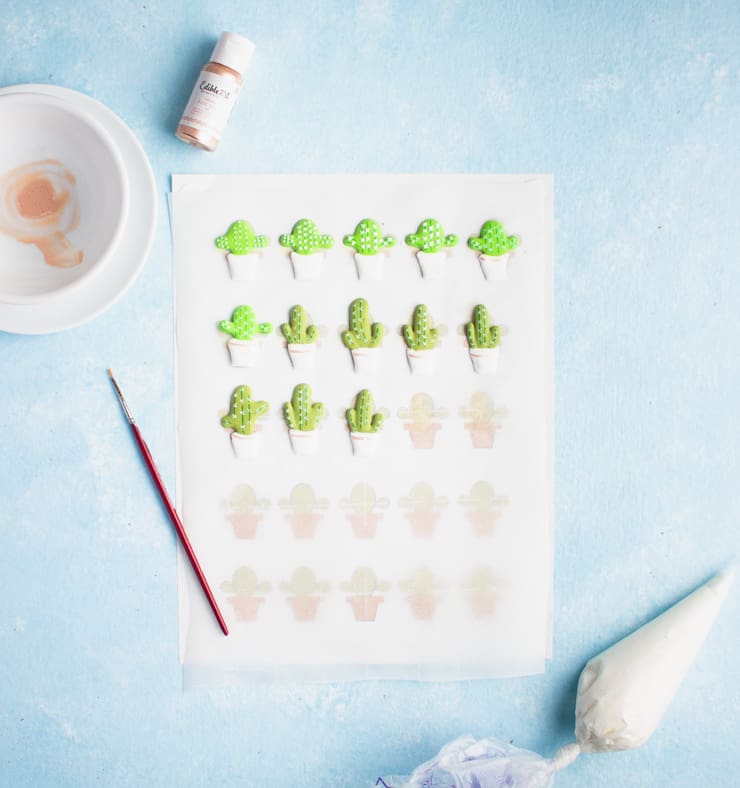
Ingredients
Scale
- 1/4 cup meringue powder or powdered egg whites
- 1/2 cup lukewarm water
- 1 lb powdered sugar
- Optional: 1 tsp of an extract of your choice
Instructions
- In the bowl of a stand mixer, combine the meringue powder/powdered egg whites and lukewarm water. In this context, "lukewarm" means just slightly warm to the touch.
- Use a whip attachment to whip the mixture on high until frothy. Scrap down the sides as you go to make sure there's no residual powder.
- Pro tip: Use a water bottle to lightly spray the sides before scraping them. This will help ensure that the powder dissolves and your royal icing is lump free.
- Sift the powdered sugar and add it to bowl. Continue whipping the icing, this time on medium speed. Stop the machine every 2-3 minutes to spray and scrape down the sides.
- If you're adding additional flavoring to your royal icing, you can add it during one of the stops to scrape down the sides of the bowl.
- Whip the royal icing until you've reached the desired consistency.
- If you need more than one consistency, whip your royal icing to the stiffest consistency and add a few drops of water at a time to the remaining icing to water it down to the desired consistency.
Notes
- Use gel food coloring: using powdered or watery food coloring can affect the consistency of your royal icing. Gel food coloring is extremely pigmented so you shouldn't need much, and the consistency is already like that of the icing itself.
- Royal icing darkens as it dries: whatever color you want on your cookie, you'll want to mix it slightly lighter as it will darken as it dries.
- Some colors are hard to mix: red and black in particular can be difficult colors to mix. The good news is that they will darken as they dry. It also helps to use a highly pigmented gel food coloring like "super black" or "super red" by Americolor.
- Make more of each color than you think you'll need: because royal icing darkens as it dries, it's very hard to match a color if you end up not having enough. It's always a good idea to make more of a color than you think you'll need.
- If you need an outline for your design, draw it directly onto your cookies with a food pen/marker.
- For easy loading, place the piping bag into a tall glass and pull the top down around the sides of the glass. This will hold the bag in place while you pour.
- Use a toothpick or a quilling tool to work the icing into place. A gentle tap or two will help the icing settle.
- If you end up with any little air bubbles, you can pop those with your toothpick or quilling tool.
- Allow the icing to dry completely before packing or adding additional decorations (about 6-8 hours).
- To prevent butter bleed, cool your cookies on a cooling rack rather than the pan, make sure they're completely cool before working with them (I like to leave them out over night so they cool and dry as much as possible) and use a thicker icing (a thinner, more porous icing is more likely to suck up more butter).
Adapted from Bake at 350
Nutrition
- Serving Size: 1 cookie worth (~2/3oz)
- Calories: 77
- Sugar: 18.5g
- Sodium: 4mg
- Fat: 0g
- Saturated Fat: 0g
- Unsaturated Fat: 0g
- Carbohydrates: 19.5g
- Fiber: 0g
- Protein: .3g
- Cholesterol: 0mg
Keywords: royal icing, how to make royal icing, cookie icing tutorial
Did you like this recipe? You might also like…
- Creating dimension with royal icing
- Mixed media cookie art
- Things I wished I'd known about cookie decorating
- Transferring cookie designs
Update Notes: This post was originally published in September of 2013 but was republished with step by step photos and tips in November of 2018.
Royal Icing Recipes For Cake Decorating
Source: https://thesimple-sweetlife.com/royal-icing-the-basics/
Posted by: lockefrouleem.blogspot.com

0 Response to "Royal Icing Recipes For Cake Decorating"
Post a Comment